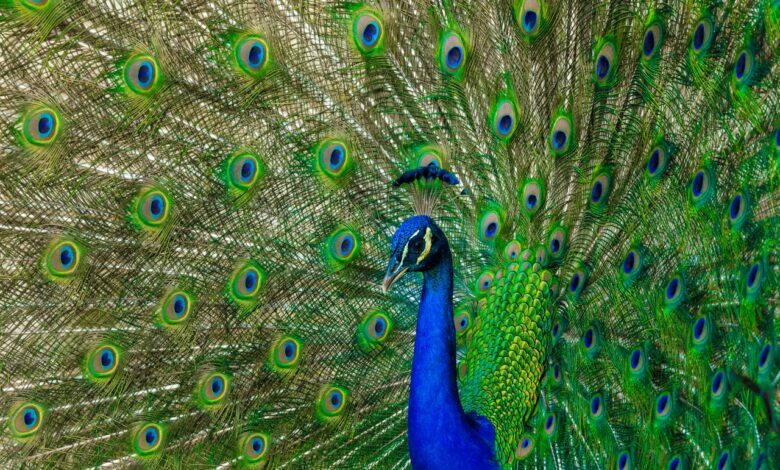The Fascinating World of Bird Dancing: Avian Choreography and Communication

Bird dancing, an enchanting phenomenon observed across numerous avian species, is a captivating blend of beauty, rhythm, and communication. These intricate movements, often associated with courtship, social interactions, and territorial displays, reveal much about bird behavior, intelligence, and evolution. In this comprehensive exploration, we will delve into the myriad facets of bird dancing, examining the choreography, symbolism, and cultural significance behind these remarkable displays.
The Art of Bird Dancing
What is Bird Dancing?
Bird dancing refers to the rhythmic and often complex movements performed by birds, typically as part of their mating rituals, social interactions, or territorial displays. These dances can involve a combination of wing flapping, hopping, spinning, and synchronized movements that are as varied as the species themselves.
The Purpose of Bird Dancing
Bird dances serve multiple purposes, primarily related to communication. They are often used to attract mates, establish dominance, and reinforce social bonds within flocks. The elaborate displays are not merely aesthetic but are crucial for survival and reproduction.
Attracting Mates
One of the primary reasons birds dance is to attract potential mates. The male bird’s performance often includes intricate movements designed to showcase his physical fitness and genetic superiority. The better the dance, the more likely he is to attract a mate. This is seen in species like the Superb Bird-of-Paradise, which performs a captivating display involving spreading its feathers and rhythmic hopping to impress females.
Establishing Dominance
Birds also use dance to establish dominance and deter rivals. For instance, the Red-capped Manakin performs a moonwalk-like dance to assert its territory and ward off other males. This behavior helps maintain social hierarchies within bird communities and ensures that the strongest individuals pass on their genes.
Reinforcing Social Bonds
In addition to courtship and territorial displays, bird dances can reinforce social bonds within flocks. Flamingos engage in synchronized dancing, involving coordinated head movements and wing flapping, to strengthen group cohesion and facilitate mating within large colonies.
Online Resources:
The Science Behind Bird Choreography
Bird Movement and Choreography
Bird choreography encompasses a range of movements, each with specific meanings and functions. The choreography is often species-specific, with some birds exhibiting highly ritualized and precise sequences. For instance, the courtship dance of the Japanese Crane involves coordinated head bobs, leaps, and wing spreads that are both mesmerizing and meticulously executed.
Bird-of-Paradise
Birds-of-paradise are famous for their elaborate courtship dances. Males of different species perform unique dances, often involving intricate feather displays, acrobatics, and precise movements to attract females. The Western Parotia, for example, performs a ballet-like dance, spreading its flank feathers and hopping around a chosen perch in a complex sequence.
Lyrebird
The Superb Lyrebird is another remarkable dancer, known for its ability to mimic natural and artificial sounds while performing a dance. The male lyrebird’s dance includes spreading its tail feathers into a lyre shape and mimicking sounds ranging from other bird species to chainsaws, all while moving rhythmically to impress females.
Online Resources:
Bird Communication Through Dance
Birds use their dances to convey a variety of messages. These include mating readiness, territorial claims, and social status. The nuances of their movements can be decoded by observing the context in which they are performed, the response of other birds, and the specific gestures involved.
Mating Readiness
Male birds often use dance to signal their readiness to mate. The more elaborate and well-executed the dance, the more likely they are to attract a mate. The Blue-footed Booby, for example, performs a high-stepping dance to show off its bright blue feet, which are a sign of health and vitality to potential mates.
Territorial Claims
Birds also use dance to assert territorial claims and deter rivals. The Anna’s Hummingbird, for instance, performs a U-shaped dive display, producing a sharp sound with its tail feathers, to warn other males away from its territory and attract females.
Social Status
In social species, dance can indicate an individual’s status within the group. The Raggiana Bird-of-Paradise engages in communal displays where males perform together in a lek (a group display area) to compete for female attention, showcasing their strength and position within the social hierarchy.
Online Resources:
- Bird Communication
- Nature on PBS: Bird Communication
- The Spruce: Bird Behavior
Bird Courtship and Mating Rituals
The Role of Dance in Bird Mating Rituals
Dance plays a pivotal role in bird mating rituals. Male birds often perform elaborate dances to attract females, showcasing their physical fitness, vitality, and suitability as mates. These performances can be highly competitive, with males striving to outdo each other to win the favor of a female.
Online Resources:
Examples of Bird Mating Dances
Dancing Cranes
Cranes are renowned for their spectacular mating dances, which include coordinated leaps, bows, and intricate footwork. These dances are not only a courtship ritual but also help to strengthen pair bonds among mated pairs.
Japanese Crane
The Japanese Crane, also known as the Red-crowned Crane, performs an elaborate dance involving bowing, jumping, and extending their wings. This dance is not only a courtship display but also reinforces the bond between mated pairs, ensuring their partnership remains strong.
Whooping Crane
The Whooping Crane’s dance includes graceful jumps, head pumping, and wing flapping. These movements are part of their courtship ritual and help in maintaining strong pair bonds, essential for successful breeding in their harsh wetland habitats.
Online Resources:
Dancing Peacocks
The peacock’s courtship dance is a display of grandeur and beauty. The male fans out his iridescent tail feathers, creating a mesmerizing display that he accentuates with rhythmic shaking and a distinctive dance to attract females.
Indian Peafowl
The Indian Peafowl, commonly known as the peacock, performs a courtship display where the male fans out his elaborate tail feathers and shakes them to create a shimmering effect. This dance, combined with a series of calls, is designed to impress and attract a female.
Green Peafowl
The Green Peafowl also displays a stunning courtship dance, where the male extends and vibrates his feathers while producing a series of vocalizations to entice a female. The vibrant colors and intricate patterns of his feathers play a crucial role in his success.
Online Resources:
- San Diego Zoo: Peafowl
- National Geographic: Peacocks
- BBC Wildlife: Peacocks
Bird Dancing in the Wild vs. Captivity
Bird Dancing in the Wild
In the wild, bird dances are performed in their natural habitats, often in open spaces that allow for full displays of their intricate movements. These dances are influenced by environmental factors, availability of mates, and the presence of competitors.
Great Crested Grebe
The Great Crested Grebe performs a synchronized courtship dance on water. This ritual includes mirroring each other’s movements, head shaking, and presenting waterweed to one another, which strengthens their pair bond and prepares them for breeding.
Western Grebe
The Western Grebe engages in a dramatic “rushing” display, where pairs run across the water’s surface in perfect synchrony. This dance showcases their agility and coordination, playing a key role in courtship and pair bonding.
Online Resources:
Bird Dancing in Captivity
Bird dancing in captivity can differ significantly from wild displays. While some birds retain their natural dance behaviors, the confined environment and lack of natural stimuli can affect the frequency and quality of their performances. However, some birds in captivity, particularly those in conservation programs or zoos with
enriched environments, continue to perform their dances, providing valuable insights into their natural behaviors.
Online Resources:
- Association of Zoos and Aquariums
- The Humane Society: Captive Birds
- National Geographic: Birds in Captivity
Bird Display and Social Behavior
The Importance of Bird Display
Displays are a critical aspect of bird social behavior. They help birds communicate effectively within their social structures, establish hierarchies, and deter potential rivals. Displays can be visual, such as dances and plumage displays, or auditory, such as songs and calls.
Bird Body Language
Bird body language is an integral part of their communication repertoire. Movements such as head bobs, wing flaps, and tail flicks convey specific messages. Understanding these signals is essential for interpreting bird behavior accurately.
Bird Evolution and Intelligence
The Evolution of Bird Dancing
Bird dancing has evolved as a complex behavior that serves multiple functions in avian life. The evolution of these dances is closely tied to the development of other traits such as plumage, vocalization, and social structure. Sexual selection plays a significant role, with females often choosing mates based on the quality of their dance displays.
Evolutionary Biology
Evolutionary biology provides insights into how bird dances developed as a means of sexual selection and species survival. Traits that enhance reproductive success are passed down, leading to increasingly elaborate and refined dance behaviors over generations.
Adaptive Significance
The adaptive significance of bird dances lies in their ability to convey critical information about an individual’s fitness. These behaviors can indicate genetic quality, health, and the ability to provide resources, all of which are important factors in mate selection and survival.
Online Resources:
- Evolution of Bird Behavior
- Science Daily: Bird Evolution
- The Royal Society: Bird Evolution
Bird Intelligence and Dance
Bird intelligence is a fascinating area of study, with many species demonstrating high levels of problem-solving abilities, communication skills, and social intelligence. The ability to perform complex dances is often an indicator of cognitive prowess, requiring memory, coordination, and learning.
Crows and Ravens
Crows and ravens are known for their intelligence and social behaviors. Although not typically known for elaborate dances, their ability to learn and mimic sounds, solve puzzles, and communicate complex messages highlights their cognitive abilities.
Parrots
Parrots, particularly those in the Psittacidae family, are highly intelligent and capable of learning and mimicking intricate dance routines. Their ability to synchronize movements with music and learn new sequences showcases their advanced cognitive and motor skills.
Online Resources:
- Bird Intelligence
- National Geographic: Smartest Birds
- BBC Earth: Bird Intelligence
Bird Communication and Music
The Role of Music in Bird Dancing
Music and rhythm play a crucial role in bird dancing. Some birds are able to synchronize their movements to external sounds, creating a rhythmic performance that enhances their display. This musicality is not only impressive but also plays a significant role in attracting mates and communicating with other birds.
Online Resources:
- Nature: Bird Song and Dance
- Smithsonian Magazine: The Rhythm of Birdsong
- Science: Bird Rhythm
Synchronied Dancing
Synchronized dancing is particularly prevalent in species that perform group displays. Flamingos, for instance, engage in mass synchronized dances, where hundreds of individuals move in unison, creating a spectacular visual effect.
Online Resources:
- National Geographic: Flamingo Dance
- Smithsonian Magazine: Synchronized Bird Dances
- BBC Earth: Bird Synchronization
Bird Social Groups
Birds are social creatures, and their dances often reflect their social structures. Flocks and colonies have complex hierarchies, and dancing can help to establish and maintain these social bonds.
Online Resources:
- Audubon: Social Birds
- BirdLife International: Bird Social Behavior
- Science Direct: Social Structure in Birds
Bird Mimicry and Rhythm
Bird Mimicry
Mimicry is a fascinating aspect of bird behavior. Some species, like the lyrebird, can imitate the sounds and movements of other animals and environmental noises. This ability enhances their communication and can play a role in their dance displays.
Bird Rhythm
Birds often incorporate rhythm and music into their dances. Songs and calls can be synchronized with their movements, creating a harmonious display that enhances the overall impact of their performance. This rhythmic coordination is a testament to their innate sense of timing and musicality.
Bird Culture and Symbolism
Bird Culture
Bird culture refers to the learned behaviors and traditions passed down through generations. Dance forms part of this cultural transmission, with young birds learning specific dance moves from their parents and flock members. This cultural aspect highlights the importance of social learning in avian communities.
Bird Dance in Mythology
Bird dances have been celebrated in human culture for centuries. They appear in mythology, folklore, and art, symbolizing various aspects of life, from fertility and love to freedom and spirituality. In many cultures, birds are messengers of the gods, and their dances are viewed as divine performances. For example, in Native American mythology, the crane dance is a symbol of balance and harmony.
Online Resources:
The Symbolism of Bird Dance
Bird dances often hold symbolic meanings within different cultures. For example, the crane dance is associated with longevity and good fortune in East Asian cultures, while peacocks symbolize beauty and pride in many traditions. Bird dances have held symbolic significance in various cultures throughout history. They are often seen as representations of freedom, beauty, and the connection between the earthly and the divine. The grace and elegance of bird dances have inspired countless works of art, literature, and music.
Online Resources:
- Cultural Significance of Birds
- Birds in Culture
- Smithsonian: Bird Symbolism
Bird Conservation and Ethical Considerations
Conservation Efforts for Dancing Birds
Conservation is crucial for the survival of many bird species that perform dances. Habitat destruction, climate change, and human interference pose significant threats. Conservation programs focus on protecting habitats, restoring populations, and ensuring that these beautiful behaviors continue for future generations.
Online Resources:
- BirdLife International: Conservation
- World Wildlife Fund: Bird Conservation
- National Audubon Society: Conservation
Ethical Considerations in Bird Dancing
Ethical considerations are paramount when studying and observing bird dances. Ensuring that birds are not disturbed or stressed during observation is essential for their well-being. This is particularly important in captivity, where the environment must be enriched to allow natural behaviors to flourish.
Online Resources:
- Humane Society: Bird Welfare
- Ethics in Birdwatching
- American Birding Association: Bird Ethics
Appreciating Bird Dances Through Media
Bird Dancing Documentaries and Photography
Documentaries and photography play a vital role in raising awareness about bird conservation. By capturing and sharing the beauty of bird dances, these mediums inspire appreciation and support for conservation efforts. Films like “Winged Migration” and photographers like Tim Laman have brought the splendor of avian dance to a global audience.
Online Resources:
Bird Dancing in Photography and Videos
Photography and videos capture the grace and beauty of bird dances, allowing us to study and appreciate these behaviors in detail. Platforms like YouTube, Vimeo, and various bird photography websites are excellent resources for viewing and sharing bird dances. These videos provide an accessible way to observe and appreciate bird dances from around the world, from the flamboyant displays of the bird of paradise to the synchronized movements of flamingos.
Online Resources:
- YouTube: Bird Dancing
- National Geographic Photography
- Audubon Photography Awards
Bird Conservation and Awareness
Importance of Bird Conservation
Conservation efforts are crucial to protect bird species and their natural behaviors, including their dances. Habitat destruction, climate change, and human interference pose significant threats to bird populations. Protecting their habitats ensures that these magnificent displays can continue for future generations.
Educational Resources
There are numerous educational resources available for those interested in learning more about bird dancing. Websites, online courses, and books offer in-depth information on bird behavior, communication, and conservation. Organizations like the Cornell Lab of Ornithology provide valuable insights and research on bird dance and other avian behaviors.
Dancing Cranes and Peacocks: Case Studies
Dancing Cranes
Cranes are known for their elaborate and graceful dances. These performances involve a series of coordinated movements, including bowing, leaping, and wing flapping. The dances serve multiple purposes, from courtship to establishing and reinforcing pair bonds. In Japan, the crane dance is a cultural icon, symbolizing peace and longevity.
Dancing Peacocks
Peacocks are perhaps the most iconic dancers in the avian world. The male peacock’s courtship display, featuring his stunning tail feathers, is a visual spectacle. The dance, accompanied by calls and rhythmic movements, is designed to attract and impress females. The peacock’s dance has also been immortalized in various cultural and religious contexts, symbolizing beauty and immortality.
Bird Dancing in Captivity: Pros and Cons
Benefits of Bird Dancing in Captivity
Birds in captivity, especially those in zoos and conservation programs, can continue to exhibit their natural dance behaviors. These displays provide enrichment, stimulate natural behaviors, and educate the public about the beauty and complexity of bird communication.
Challenges and Ethical Considerations
However, captivity also poses challenges. The restricted environment can impact the frequency and quality of bird dances. Ethical considerations must be taken into account to ensure that birds are kept in conditions that allow for their natural behaviors and well-being.
Bird Dance in Modern Culture
Influence on Art and Music
Bird dancing has inspired artists and musicians for centuries. The elegance and rhythm of avian movements have been captured in paintings, sculptures, and music compositions. Contemporary artists continue to draw inspiration from bird dances, creating works that celebrate the beauty of nature.
Bird Dance in Media and Entertainment
Bird dances have also found their way into media and entertainment. Documentaries, nature shows, and viral videos showcase the mesmerizing displays, bringing the wonder of bird choreography to a broad audience. These portrayals help raise awareness and appreciation for avian behavior and conservation.
Bird Dance as a Tool for Education
Teaching Bird Behavior
Bird dance can be a powerful tool for teaching about bird behavior, communication, and conservation. Educational programs that include observations of bird dances help students understand the complexity and significance of these behaviors. Interactive activities, such as dance workshops inspired by bird movements, can engage and inspire learners of all ages.
Promoting Conservation Awareness
By highlighting the beauty and importance of bird dances, educators and conservationists can promote awareness and support for bird conservation. Public displays, educational materials, and community events centered around bird dancing can foster a deeper connection to nature and a commitment to protecting bird habitats.
The Dance of Life
Bird dancing is a testament to the wonders of nature, showcasing the intricate choreography, communication, and cultural significance of avian behavior. From the courtship rituals of cranes and peacocks to the synchronized displays of flamingos, bird dances captivate and inspire us. As we continue to study and appreciate these performances, we gain a deeper understanding of the natural world and our place within it.
By promoting conservation efforts, supporting ethical treatment of birds in captivity, and celebrating the beauty of bird dances through art and media, we can ensure that these enchanting displays remain a vital part of our natural heritage. Whether in the wild or through the lens of a camera, the dance of life performed by birds continues to mesmerize and educate, reminding us of the delicate balance and incredible diversity of life on Earth.
Frequently Asked Questions
1. Why do birds dance?
Bird dances serve various purposes, including courtship, territorial displays, communication, and simply expressing joy.
2. What kind of birds are known for dancing?
Many bird species engage in dancing, but some, like cranes, peacocks, and man o’ war birds, are particularly renowned for their elaborate displays.
3. How do birds learn to dance?
Some dances are innate, while others are learned through observation and practice. Social interactions play a crucial role in developing dance routines.
4. Can birds dance to music?
While there’s no definitive proof, some birds exhibit rhythmic movements that might suggest a response to music or sound patterns.
5. Can I teach my pet bird to dance?
While it’s unlikely to achieve complex choreography, positive reinforcement training might encourage rhythmic movements or tricks.
6. Are there any cultural references to bird dancing?
Many cultures incorporate bird dances into folklore, rituals, and art. They often symbolize freedom, beauty, and spiritual connection.
7. How can I capture bird dance on camera?
Patience and the right equipment are key. Using a camera with a good zoom lens and burst mode can help capture the swift movements.
8. Are there any competitions or events focused on bird dancing?
While not as common as other animal competitions, some bird shows might feature elements of dance or display.
9. Can bird dancing be a form of exercise for birds?
Yes, dancing can be a form of physical activity, especially for birds in captivity. It helps maintain their fitness and well-being.
10. How can I appreciate bird dancing without disturbing their natural behavior?
Observe from a distance, using binoculars or telephoto lenses. Avoid making loud noises or sudden movements that might disrupt their dance.






